In the December 2017 Mergers & Acquisitions Virtual Round Table by Corporate LiveWire, TDG partner Scott Newton had the pleasure of contributing to the discussion. To learn more about how Scott and other industry thought leaders report on the state of Mergers and Acquisitions in 2017 and moving into 2018, read the excerpts below and the full report here.
How has Brexit impacted (i) inbound and (ii) outbound M&A activity?
The biggest Brexit impact I have observed is in the board room. Directors and CEOs are waking up to the importance of challenging their assumptions. Previously, many boards and leaders had assumed “Brexit will never happen”. This, along with other rapid changes in world events, has provided a catalyst for change in approaches to risk.
Leading companies are now looking at the stability of their global platforms, the assumptions underpinning growth and prosperity. In Europe, this is driving M&A activity because companies do not want to be exposed to unnecessary risks. Previously, having a base only in the UK, or only in another EU nation would be accepted, whereas today companies are choosing to have a physical presence in both areas.
What are the most important factors to consider when conducting due diligence? How is technology changing or adapting the role of due diligence?
Due diligence is an interesting challenge to address. What you may have observed is that organisations tend to put a tremendous focus on financial, tax, and asset/IP due diligence. What is missing is a detailed study of the key people. Within the target organisation, there are 10 to 15 leaders that are making the business as successful as it is today, and can be leveraged for the future. What are the intentions of those business leaders? Are they aligned with remaining in the business? What makes them satisfied about their career? How will they fit in the new company? How will their capabilities assist in realising the new strategy?
Technology is changing the traditional due diligence and audit, making it faster, more accurate and requiring less people. Yet this is still not addressing the most critical issues. In most M&A deals, the new owners have a plan of what they will do with the target. Up to 70% of acquisitions never achieve their original goals. This is a strategic issue, a people issue, and an area that must be addressed in due diligence. At the moment, this is ignored often because the people responsible for the due diligence are from legal and finance. I recommend adding key members to the team to make sure there is a clear understanding of not only the financial stability and legal position of the organisation, and also from a human side. Keeping those key leaders and ensuring they can work within your new organisation is the key to success.
Can you outline the importance of implementing an effective post-merger integration strategy?
The post-merger integration strategy will determine the degree of success of the acquisition. Too often, there is euphoria surrounding the completion of the deal, and integration is left as an after-thought. Additionally, while a number of professional advisors are used to completing the transaction, it is often assumed that management alone will be able to manage the post merger integration responsibilities.
The impact on all stakeholders in the acquired firm need to be considered for integration to be a success. Particularly in the case of a foreign acquisition, there are a number of important considerations that must be addressed.
In discussing strategy, one of those most successful integration approaches I have seen work is the installation of a common process for strategy within both the new acquisition and the acquiring company. This common process platform serves as a way to rationally discuss the key decisions that must be made, removing emotion and legacy from the new opportunities.
An overlooked consideration in post-merger integration is the impact culture will have on the business. Today, many acquisitions can involve very different cultures, as for example when an Asian firm acquires a European firm, or an American firm is acquired by a French conglomerate. It is not enough to say “delegate this to HR” or “it will work itself out.” There needs to be a program put in place from the entire leadership team top down that addresses how this can be managed. Large scale failures, such as the Mercedes/Chrysler acquisition, were a result of poor cultural fit, and no reach to integration. In the most successful cases, what you observe is that the CEO, the board, and senior management had a well thought through process they installed to ensure the transition was managed successfully
What are the key issues that need to be considered by a foreign investor when planning an investment in your jurisdiction?
I think most foreign investors already cover some of the headline issues: intellectual property, trademarks, pricing, labour relations, assets, legal restrictions, anti-trust, for example. There are a few areas though that are neglected, and can be costly long term. Compliance is an area that is often not looked at carefully by foreign investors. Large, successful, conscientious firms, such as GSK, have recently been subject to negative press and large fines due to compliance issues in China for example.
When entering into a foreign market transaction, it is critical to take a close look at how compliance has been approached in the target firm, what the culture inside the company towards compliance is, and how it will be integrated into the acquiring company.
Secondly, a number of companies were recently “caught out” when China began rigidly applying foreign exchange repatriation restrictions and capital controls. The State Administration of Foreign Exchange (SAFE) employed longer than average waiting periods on approval for overseas payments, and requested additional documentation which was difficult for many multinationals to produce quickly and accurately. The question should be asked “As we invest in this foreign market, what capabilities do we need to invest in to be successful?”
What I recommend to business leaders is to take a careful look at your foreign investments, and investment plans, and build a matrix, listing the capabilities required, and your current state of readiness. For the highest impact on business areas, ensure that if you do not have the capabilities today, you are investing to be ready tomorrow.
Which (i) jurisdictions and (ii) industries currently provide the best M&A opportunities? What are the advantages and disadvantages of the various different types of deal structures?
Industrials today offer many excellent opportunities. In Northern Italy, for example, there are a stable of family controlled firms that possess valuable IP, have highly qualified staff in production and R&D, and can provide a pipeline of new technology for multinationals. As many of the firms are entering new generations, and they look at how to continue to grow, an investment from private equity, or from adjacent industries, becomes a viable solution.
I recommend taking a close look at companies in the metal and plastics businesses, as there is a high level of know how, in some cases good brand recognition, and industrial expertise that can be leveraged.
Deal Structures is a complex topic. What I would say is that in the case of deciding on a Joint Venture, be sure that all the terms are exceptionally clear from the beginning. What we have seen repeatedly in possible JV transactions is that there are some unsaid assumptions which, if not made clear, become “deal killers” or at least points of heavy friction in the transaction. One way to clear potential issues is to hold a two-day strategic session where the topics are laid out, the assumptions are written and made clear, and the parties come to an understanding. This upfront investment can save potential disputes following a JV implementation.
What are the most common disputes in cross-border M&A transactions?
The root cause of disputes in cross-border M&A is that the acquisition is not performing as anticipated. Apart from outright fraud, which fortunately is not common and can be detected in due diligence, there are three main reasons for this dispute:
(i) Demand Generation is not working: In this case, the organisation is failing to execute on the basics of generating customer interest. Often, this is due to a change of key management and approach, or because customers are concerned with supplier concentration following an acquisition. You have cases where, post-acquisition, supplier concentration within a key customer exceeds 50%. Clearly, this is difficult for the customer to accept long-term. Here, the goal should be, prior to acquisition, to identify the customers where concentration will be high, and develop a plan for retention. Addressing concerns before they happen will be a less costly exercise.
(ii) Sales Force Effectiveness under performing: This is often a case of an unfocused sales force following an acquisition. The sales force is not clear of the priorities of the new management group, and are focusing on the wrong areas, investing in the wrong capabilities. A “shotgun” type of approach results in which people want to hit a variety of targets, and have not clarified what are the biggest priorities and investments. This can be minimised with an approach to Strategy that, market by market, product category by product category, sits clear targets, metrics, and priorities.
(iii) Failure to Integrate: This is the biggest reason in more than 70% of acquisition failures and subsequent disputes.
What key trends do you expect to see over the coming year and in an ideal world what would you like to see implemented or changed?
Key Trends for 2018:
Acceleration of consolidation in industry: This will be a busy year. Focus on Middle Market: Middle market opportunities are untapped, and both private equity and multinationals are addressing this. Middle market purchases as bolt-ons are gaining a new respect in the board room, and within the investment community, as a creative way to address long term growth and profitability.
Focus on Asia, and in particular China: The emerging middle class in China, neighbouring countries, and territories in Southeast Asia will deliver one billion new consumers to the market by 2030. This is a huge number of new potential customers, and one that cannot be ignored. Many companies still have insufficient focus on Southeast Asia, and as their leaders and boards recognise this gap, will invest. The rate of change in Southeast Asia and China are unprecedented, and present a unique occasion for companies to grow and to remain relevant.
Spotlight on IT: High profile IT breaches have proved to be not only embarrassing to companies, but also longterm value destroyers. As an example, the recent breach at Equifax has wiped billions, and impacted over 143 million Americans. Boards are well aware of the risks with IT, and there is an impetus to look carefully at IT, look for holes, and ensure systems will not be breached. In terms of acquisitions, due diligence on IT will become even more detailed, and buyers will address all possible avenues to protection from IT breaches.
E-commerce becomes simply commerce: We are already seeing this start to happen. Look at the recent acquisitions by Amazon of Whole Foods, and by Tencent, Baidu, and Alibaba in 2017. The future convergence into omnichannel is happening more quickly than forecast. In 2018, we will see M&A related to commerce and e-commerce accelerating.
In an ideal world, I would like to see boards become more diverse. The world is becoming much more global, yet the composition of boards remains distinctly homogeneous. An effort by the Chair, the CEO, and senior NEDs (Non-executive directors), needs to be made to increase board diversity. It is critical to have board members that “think” like your customers, suppliers, and regulators of tomorrow.
Lastly, in terms of strategy, we see a trend towards organisations adopting a process-based approach and rolling it out group wide. The old theory of top down strategy, or outside only strategy formulation, is no longer being invested in. This is a positive change that will accelerate profitability.




%20copy-1.jpg)

